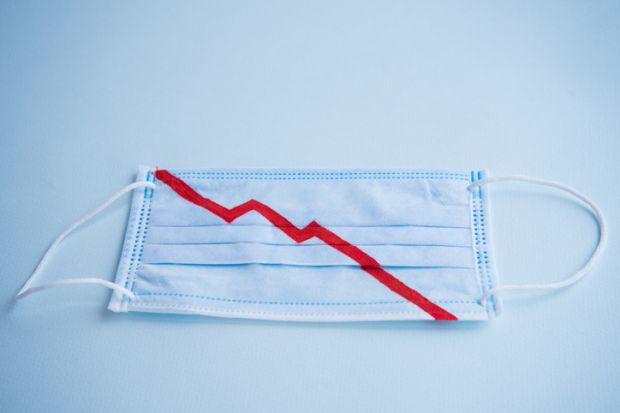UK higher education’s biggest pension scheme has warned that contributions to the fund may have to rise “sharply” after the havoc wreaked by coronavirus on the global financial markets added billions more to its estimated deficit.
The Universities Superannuation Scheme also said that it had been forced to ask employers to commit to remaining in the scheme for a 30-year period to provide additional security, as it revealed that the gap between its assets and the cost of pensions already promised to members stood at £19 billion at the end of May.
This measure – the “technical provisions” deficit – had stood at £12 billion at the end of March, and just £3.6 billion a little more than two years ago.
USS also calculates a “self-sufficiency” measure of how much funding would be required to meet existing liabilities in the event that employers and members were unable to make future contributions. The deficit on this measure had risen to £34.3 billion by the end of May.
USS, which is the main pension scheme for hundreds of thousands of staff across 340 higher education institutions, said that market conditions meant that the estimated combined contributions required from members and employers required to protect scheme benefits had increased significantly. Prior to the last valuation in 2018 they stood at 28.7 per cent of member salaries, and they are now being levied at a rate of 30.7 per cent – 9.6 per cent from members, and 21.1 per cent from employers.
To protect existing benefits on the current valuation methodology, they would need to rise to 39.2 per cent, USS said.
While a new valuation process is under way, and is likely to take on increased investment risk in the hope of higher returns, USS says that the figures “illustrate the scale of the challenge facing us” and that the lower than expected returns now seen across all asset classes means that “these moves will not be sufficient to keep contributions close to those paid in the past”.
Writing in Times Higher Education, Bill Galvin, the fund’s chief executive, says: “The unavoidable truth is that defined benefit pensions were expensive before Covid-19. The depth of the present economic shock has exacerbated these issues.”
Mr Galvin says that, in response, USS had “asked employers to sign up to a long-term commitment to the scheme that will allow us to rely on their collective strength for the next 30 years”, which will “help us take on more risk in search of reward”.
He says that the fund is also “engaging closely” with the Pensions Regulator, which had previously indicated that it felt the USS fund was at the limit of the acceptable level of risk.
But Mr Galvin writes that USS “cannot change the fundamentals of the equation”.
“Unless employers are prepared to underpin a very big dependency on volatile asset returns, and unless they can convince us that they are able and willing to do so through tangible commitments, then contributions will have to rise sharply,” Mr Galvin writes. “It looks likely they will need to rise even higher than anticipated at the 2018 valuation.”
The warning may dampen hopes of an end to the industrial dispute over future contributions to the USS. Staff at 52 pre-92 universities have been on strike for 22 days this academic year over the proposed contribution hikes.
